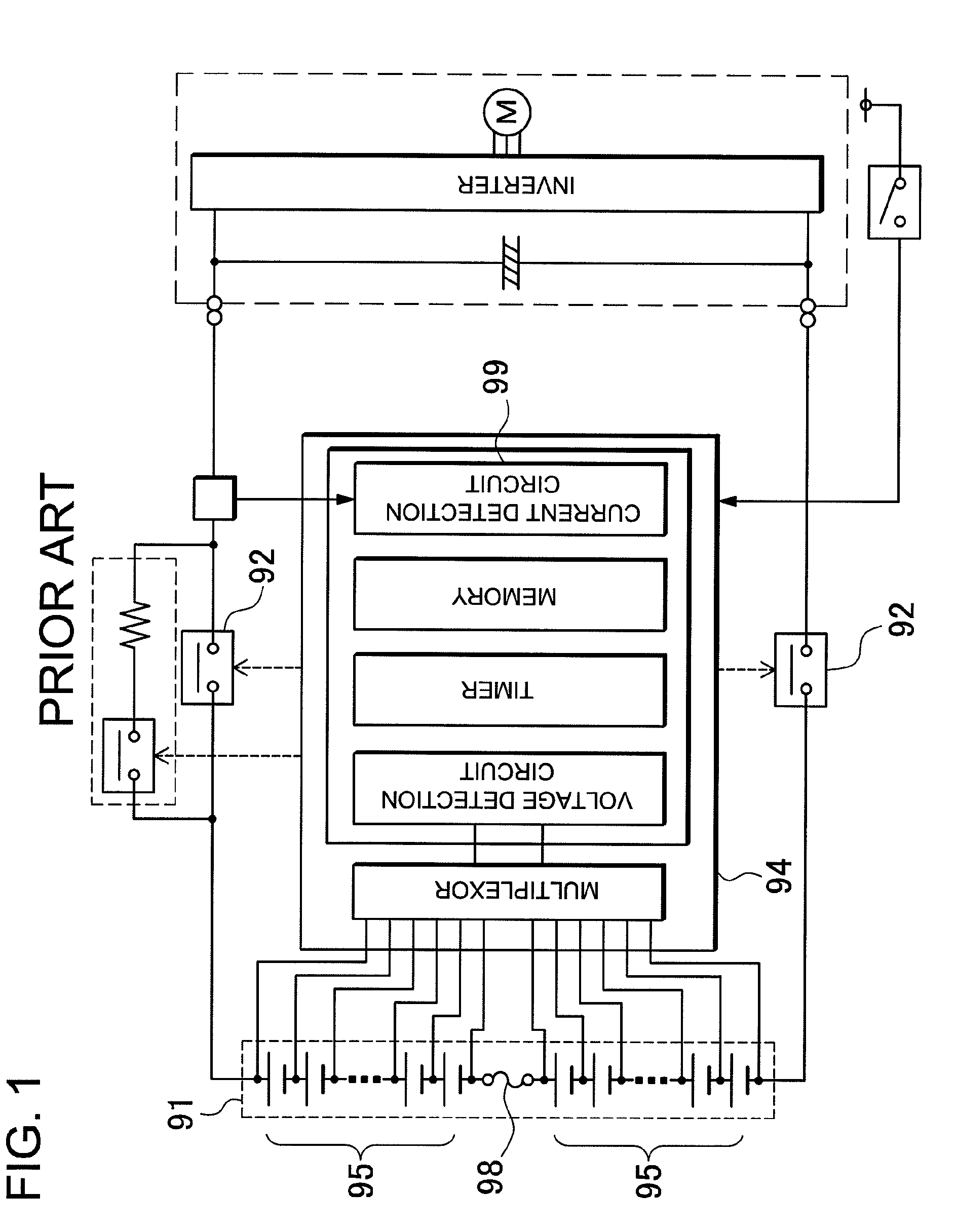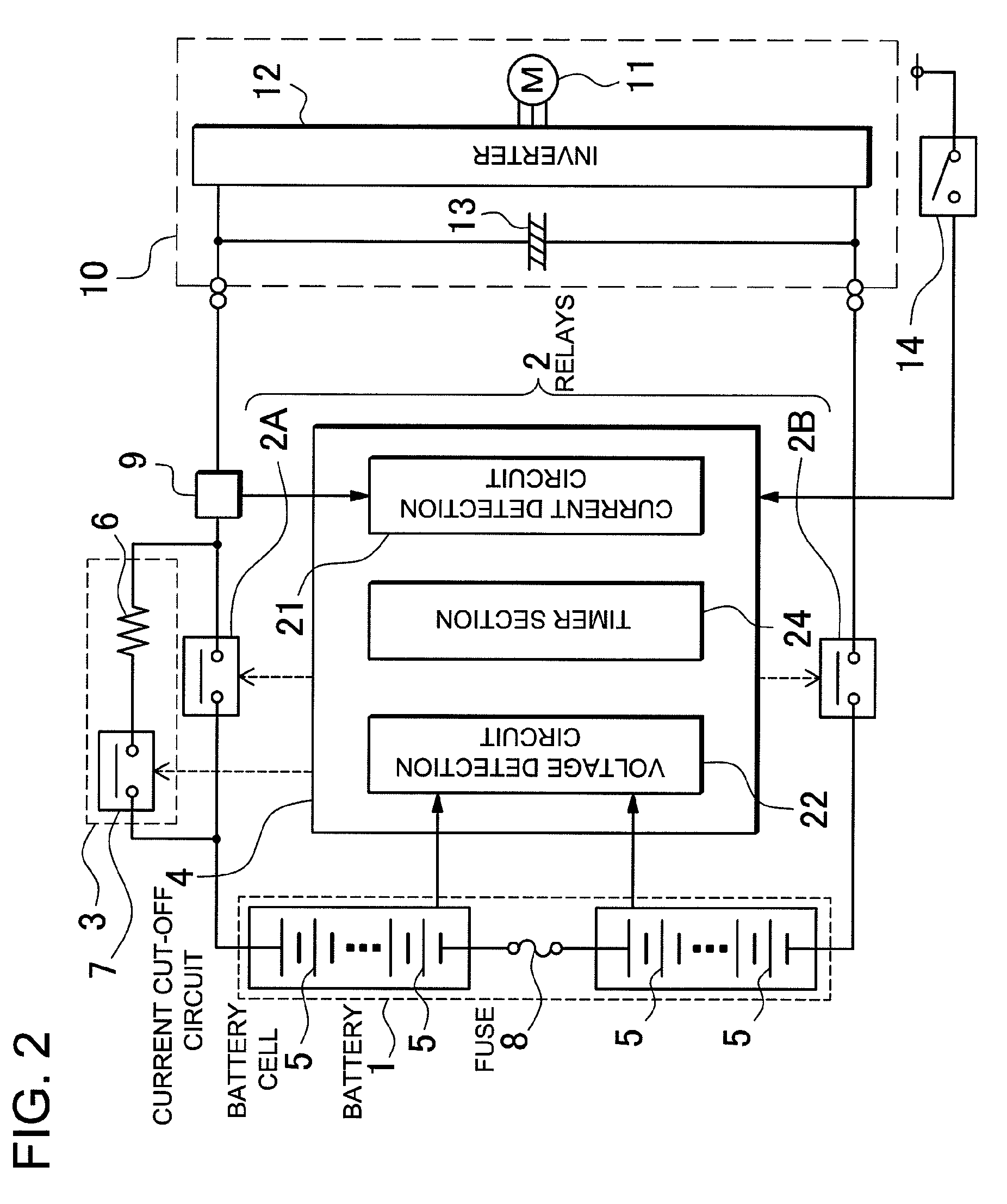Battery system with relays
a battery system and relay technology, applied in battery/fuel cell control arrangement, safety/protection circuit, cell components, etc., to achieve the effect of reliably cutting off excessive battery current, and reliable cutting o
- Summary
- Abstract
- Description
- Claims
- Application Information
AI Technical Summary
Benefits of technology
Problems solved by technology
Method used
Image
Examples
Embodiment Construction
)
[0015]Another battery system is provided with a battery 1 having a plurality of battery cells 5 that can be recharged, a fuse 8 connected in series with the battery 1 that is self-fusing with excessive current flow, and internal current cut-off sections established in the battery cells 5 that cut-off battery cell 5 internal circuit connections under excessive current or over-charging conditions. The fusing characteristics of the fuse 8 are set to blow the fuse 8 at a current that is lower than the cut-off current of the internal current cut-off sections. In this battery system, when excessive current flows in the battery 1, the fuse 8 blows before internal current cut-off section activation.
[0016]Still another battery system is provided with a battery 1 having a plurality of battery cells 5 that can be recharged, relays 2 connected in series with the output-side of the battery 1, a current cut-off circuit 4 that detects excessive battery 1 current and controls the relays 2 from ON ...
PUM
| Property | Measurement | Unit |
|---|---|---|
| output voltage | aaaaa | aaaaa |
| current | aaaaa | aaaaa |
| output voltage | aaaaa | aaaaa |
Abstract
Description
Claims
Application Information
 Login to View More
Login to View More - R&D
- Intellectual Property
- Life Sciences
- Materials
- Tech Scout
- Unparalleled Data Quality
- Higher Quality Content
- 60% Fewer Hallucinations
Browse by: Latest US Patents, China's latest patents, Technical Efficacy Thesaurus, Application Domain, Technology Topic, Popular Technical Reports.
© 2025 PatSnap. All rights reserved.Legal|Privacy policy|Modern Slavery Act Transparency Statement|Sitemap|About US| Contact US: help@patsnap.com



